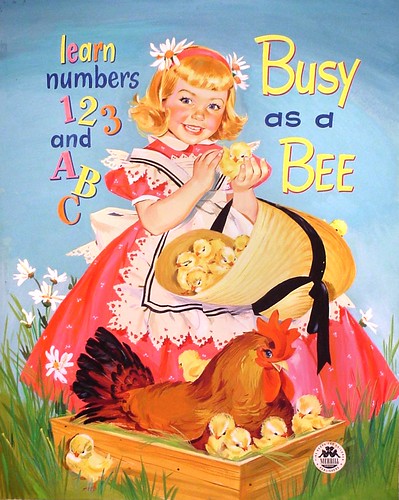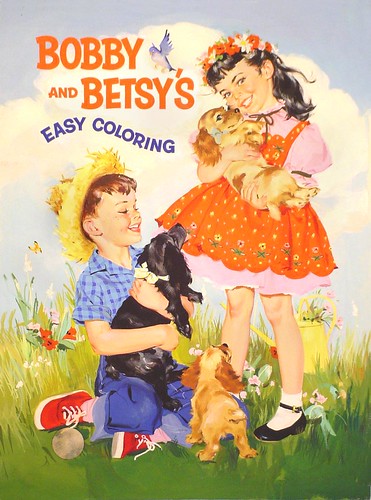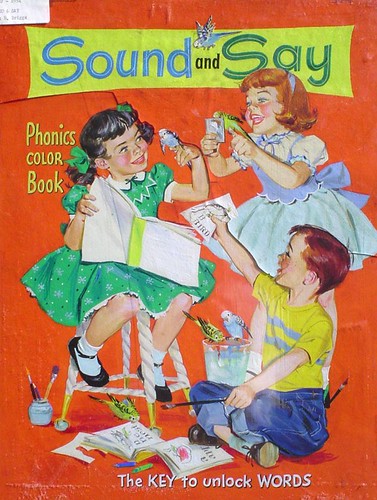
As I remember, these covers paid $300. I may have received more for the Heavenly Blue Wedding. It was the year's major project and had many more figures. I was either offered more or bargained for more.
I wouldn't have done those for $300.

Remember that $300 went a lot further in the early 50's. My starting salary at Cooper's was $50 a week. Cooper raised that to $100 within a month. Starting salary for an Art Director at Y & R in 1951 was $65 a week. You could get a lunch at Schraft's for 50 cents so $65 seemed like a fortune to someone just out of Art School. Oh yes, I did the clothes for a few of my paper doll They were pure fun. No models to book..just fantasy. They paid $150 a page. (Remind me to send you a page from the only one I have.)

As for time... I'm guessing that I was given several weeks but that that involved about three to four total days of work. However, Marion Merrill wanted to see pencils so the work was always staggered with Cooper work at the same time. When I was salaried, I did freelance projects before and after regular hours and weekends. When I changed to commissioned work, I could fit them in as needed. Each usually took part of a day for preliminary sketches for myself, part of another for a model shoot and another to work them together in a composition, get any needed reference, and do the pencil. The painting usually took no more than a day. I also remember that the first deadline I ever missed was for one of the Merrill jobs. Lauchlin, my first child, arrived ten days before expected. Marion Merrill was quite understanding.

I didn't usually receive a layout but I vaguely recall that Marion indicated how many figures she wanted. She also always wanted to see pencils before proceeding with the finish. (In the Merrill Pub Archives are decades worth of pencil drawings). She probably suggested the content scene such as cake cutting. I might have had some kind of layout for "Pals to paint and Color", with the close-up of the little boy. I'd completely forgotten that one but recognized it when I saw it again. I painted the brush under the palettes so that must have been in a layout. I came up with most of the ideas, and definitely the gestures,compositions, and little businesses. The titles and samples of the book contents were usually enough to set the scene. I remember being pleased with incorporating the title of "Read, Write, and Count" in little slates and having the doll hold one.

Your statement that these fascinate you is amazing to me. Perhaps it's because the world of ideal childhood they represent almost seems like something from the 19th century rather than the 20th. No pants on girls. Bows everywhere. Every dress starched. I was queen of the perkies and the cutes. And note that every child was Caucasian.

Illustrators took that for granted then. Incidentally, the first time I was asked by an Art Director to show ethnic diversity was in the 70's. That was for a poster for Shasta soft drinks.
Barbara Bradley received the 2007 Outstanding Educator in the Arts Award from the Society of Illustrators. She is the retired Director of Illustration at the Academy of Art University. The Academy has created a blog, thankyoubarbarabradley.com in her honor. She is also the subject of an in-depth interview and related article by Neil Shapiro in the current issue of Illustration magazine.
My Barbara Bradley Flickr set.
This has been a fascinating week! I love it.
ReplyDeleteThis comment has been removed by the author.
ReplyDeleteBarbara (or "Mrs. Bradley" as we were required to call her in those days) was my drawing teacher at the Academy in SF from 1978-1980.It was interesting that as her students, we knew so little about her illustration career in New York. I think she must have thought we wouldn't have thought it was interesting or been able to appreciate it because of the time context.
ReplyDeleteI hope that the readers of this fascinating series -I can't help thinking of the television series "Mad Men"- also appreciate Barbara's even greater contribution to illustration as a teacher. Quite a few of today's top illustrators sat at Barbara's feet and marveled at her drawing ability-and her great ability to teach it.
This series has been irresistible to an outsider like me. I have no idea of how illustrators schooled, of the community that training seems to have produced, of the life-long satisfactions it enabled. I wish we could go on like this for another few weeks.
ReplyDeleteBob Bollini
Thanks for highlighting Ms. Bradley and allowing her to tell her own story. I absolutely love these pieces, especially "Heavenly Blue Wedding". What an inspiration.
ReplyDeleteI hope you enjoy your retirement Mrs. Bradley. I am so glad you graced my life. Sorry I could not have been there.
ReplyDeletePS I love you Clothed Figure Drawing Book and look at it often.
Molly Windsor